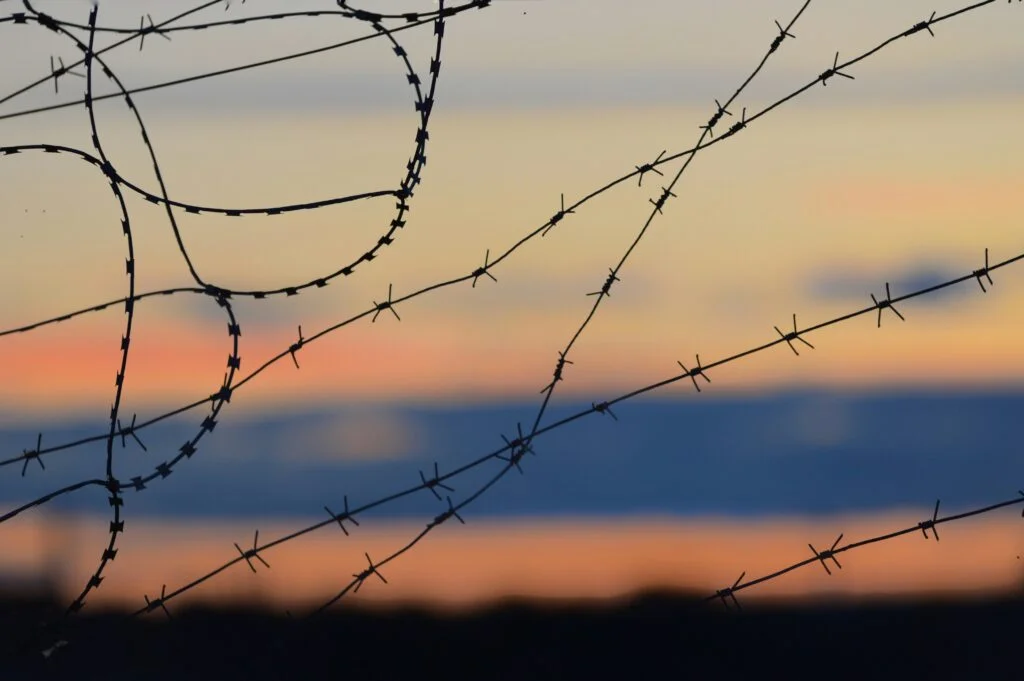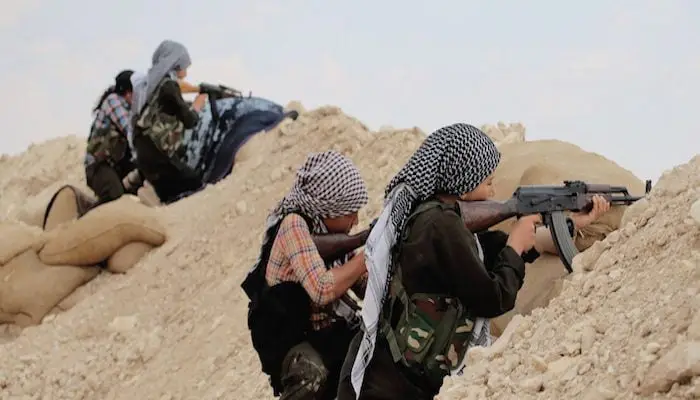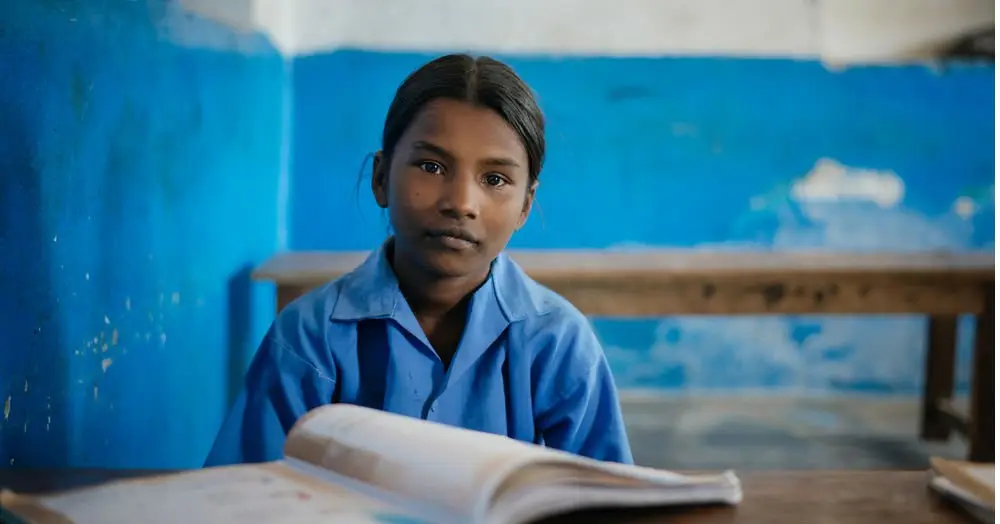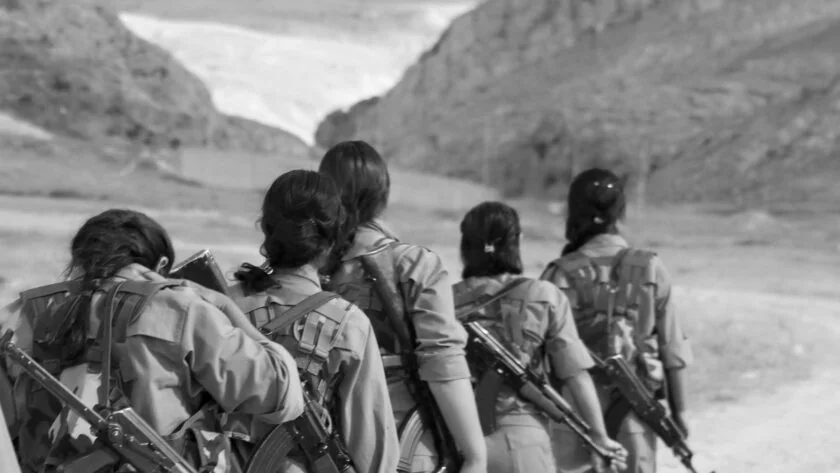
Why Does ‘Women in Terrorism’ Terrorize the Society?
We could all unanimously agree that terrorism is a heinous and violent act that inflicts severe damage upon human life, property, society, and governance mechanisms. What we want to analyze here, however, is the participation of women in terrorism. The central argument put forward here relates to the fact that gender stereotypes regard women in terrorism merely as victims and not as warriors.
Analysts often examine women’s motives or decisions to participate in violence or join extremist groups from a gender perspective. The term ‘female terrorists’ itself explains this stereotypical division, which indicates that men are the default! The very fact that women can engage in violence seems counter-intuitive to many. They often associate women with peace, motherhood, caring, and interdependence rather than violence.
Miranda Alison pointed out that women who engage in terrorism are often portrayed as unnatural, gender hostile, sexually deviant, mentally unstable, or easily manipulated. The media usually label female terrorists as “whores” engaging in demonic activities that contradict femininity. When they make headlines, the media tend to sympathize with their fate rather than explore their political motives.

The often-heard story of Vengeance!
Women who accept terrorism or extremism are said to have different motives than men. The available literature on the subject often concludes that they choose violence as personal vengeance. Say, they have been raped, abused, sexually exploited, or lost their loved ones.
It is necessary to understand that these gender ideas, expectations, and stereotypes have a long history. In “The Female Terrorist and Her Impact on Policing” from 1976, the author portrays ‘erotomania’ as ‘the main cause of female terrorism’ which, according to the author, arises because young women or girls have been neglected by society in general and the father in particular.
Mia Bloom identifies the motivations for committing terrorism as the five R’s: Revenge for the death of a family member, Redemption for past sins, Relationships with terrorists, a means of gaining Respect, and a result of rape. A minimal number of stories associate women’s terrorism with the political obsession with the cause, whereas this is normal in stories depicting terrorist motives on the part of men.
Within these groups, only a tiny percentage of women take on severe roles, such as suicide bombers or hijackers. Representations of female terrorists often do not ascribe to them any individual capacity to act.

Media portrayals and theories
Caron E. Gentry examines gender prejudice against female suicide bombers through Western media and notes how female suicide bombers are portrayed as rebellious, sterile, or submissive wives, making their actions sensational in a gender context. (Sjoberg & Gentry, 2011)
In a newspaper report on the first Palestinian female suicide bomber, she was described as “an attractive auburn-haired graduate who had a loving family and liked to wear sleeveless dresses and make-up”. News reports about male terrorists only give such details in connection with the description of the perpetrator.
The media also developed the ‘Avenger Theory’, suggesting that women were drawn to terrorism due to the pain of their loss. While this may be true, the point here is that these theories exclusively target women, despite half of the terrorists being men! Russian journalists also coined another term called the ‘Zombie Theory’, alleging that women were drugged and, therefore, forced to carry out the acts against their will. The first theory is valid because pain is a powerful motivator, but it is not specific to women, especially since half of the terrorists were men.

The Less-spoken, Political Motives
To understand why women become involved in terrorism, it is critical to determine their political motivations. This concerns their background, ethnicity, culture, language, and other factors. Moreover, it is essential to note that there is no single profile of a terrorist, as these factors change drastically from person to person. However, there can be the existence of a strong belief in a cause that is worth fighting. It is often the strongest positive motivation for individuals, men and women alike.
Nationalist or secessionist motives are often common reasons for women to turn to terror, just as men. The Tamils in Sri Lanka had this type of belief in a cause for an independent Tamil state. One factor contributing to women joining the LTTE was the expulsions. These led to the displacement of millions of people over the decades. The loss of homes led to feelings of helplessness and broken families and influenced a nationalist environment. The Liberation Tamil Tigers of Eelam explicitly commit to women’s liberation as part of their national agenda. A family tradition of revolution or martyrdom is significant.

Factors influencing involvement
A history of personal or systemic injustice, including traumatic experiences, is another factor. This is exemplified in Chechnya, where a long history of violent oppression exists. However, the point to note here is that both women and men turn to terrorism due to such personal loss and grievances.
In Chechnya, women were as motivated as men to join terrorist groups. Studies indicate they carried out more lethal attacks. The ‘Black Widows’ defied patriarchal norms and gender roles. They sought revenge for themselves, family, and nation.
Speckhard and Akhmedova studied the motivations of suicide terrorists in Chechnya and found that factors are individual and group-based for both men and women, which include living in a conflicted area or war zone; suffering a personal trauma, primarily the death of a close family member; exposure to or seeking out militant groups; and a resonating message, meaning in life, brotherhood, or need for revenge. The results of their research similarly apply to those of FARC and LTTE. Further, personal grievances, such as rape, can play an essential role for women as it does for men. (Speckhard & Ahkmedova, 2006)
However, the media is enthusiastic only about elaborating upon the traumatic loss and vengeance of women while stressing men’s motives as political. The consequence of overlooking women as perpetrators of political violence motivated to kill and die for their cause denies them agency and the capability for violent actions beyond their social conditions. Women may be more nurturing, but it is essential to understand that they can join terror groups for the same reasons as men: because of their strong belief in a cause and a particular organization.

Analysis
Though many women actively involved themselves in terrorist and extremist groups, this has not elevated their power and status to equal that of men in these groups. Farhana Qazi points out that the inclusion of women in terrorist organizations is unlikely to change the social status of women in Islamic societies. Men in these groups do not accord equal status to their female counterparts.
However, it is no doubt that these women are brave. This is where governments could employ their fearlessness and skills for societal good. While analyzing the population of most of the terror-inflicted countries, it is visible that women are higher in number. However, lack of proper education and employment makes them vulnerable, and many of them turn to terrorism.
This is a serious issue that needs to be tackled efficiently. The government authorities should develop policies to ensure proper education for women and equal inclusion of women in the workforce. Special policy measures must be brought about for women since they are among the most disadvantaged groups in society.
Pakistani activist Mossarat Qadeem is an example. She works with mothers to keep young men from joining jihadis. Qadeem lives in Islamabad and regularly meets with mothers of young terrorists or potential terrorists. He works to dissuade those men from terrorism. She has successfully persuaded 78 young men to avoid taking extremist paths. Women directly involved in terrorism will have an added advantage in taking up roles like Qadeem. It’s because these women possess prior knowledge about the motives and operations of terrorist groups.
About the Author
Ardra R

Ardra R is a Political Science Honours graduate from Lady Shri Ram College for Women. She is currently pursuing her Master’s in Politics and International Relations at Mahatma Gandhi University, Kottayam. As a young feminist and writer, Gender, Inclusivity, and Politics are her niche, while being an active mental health advocate.






